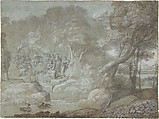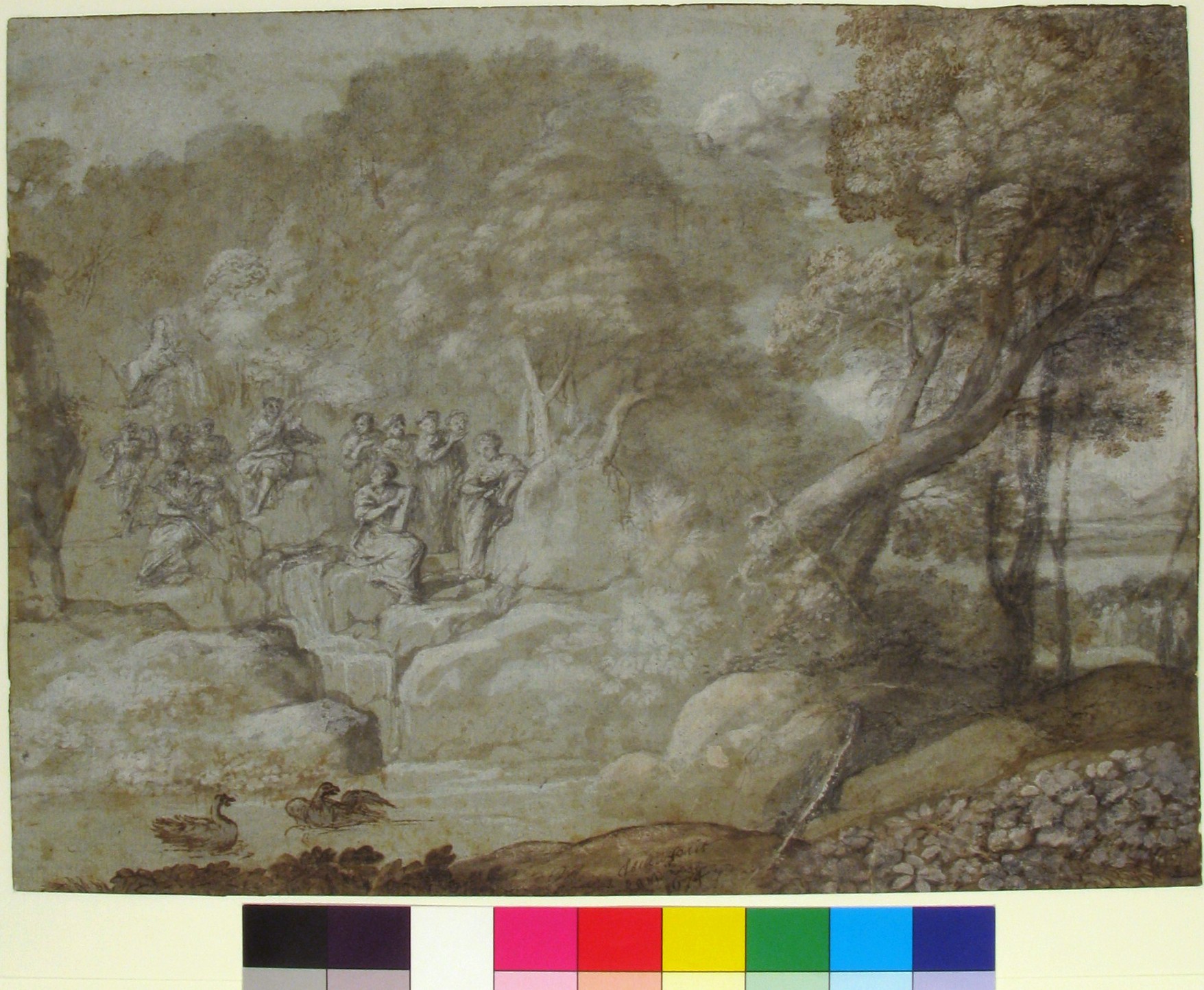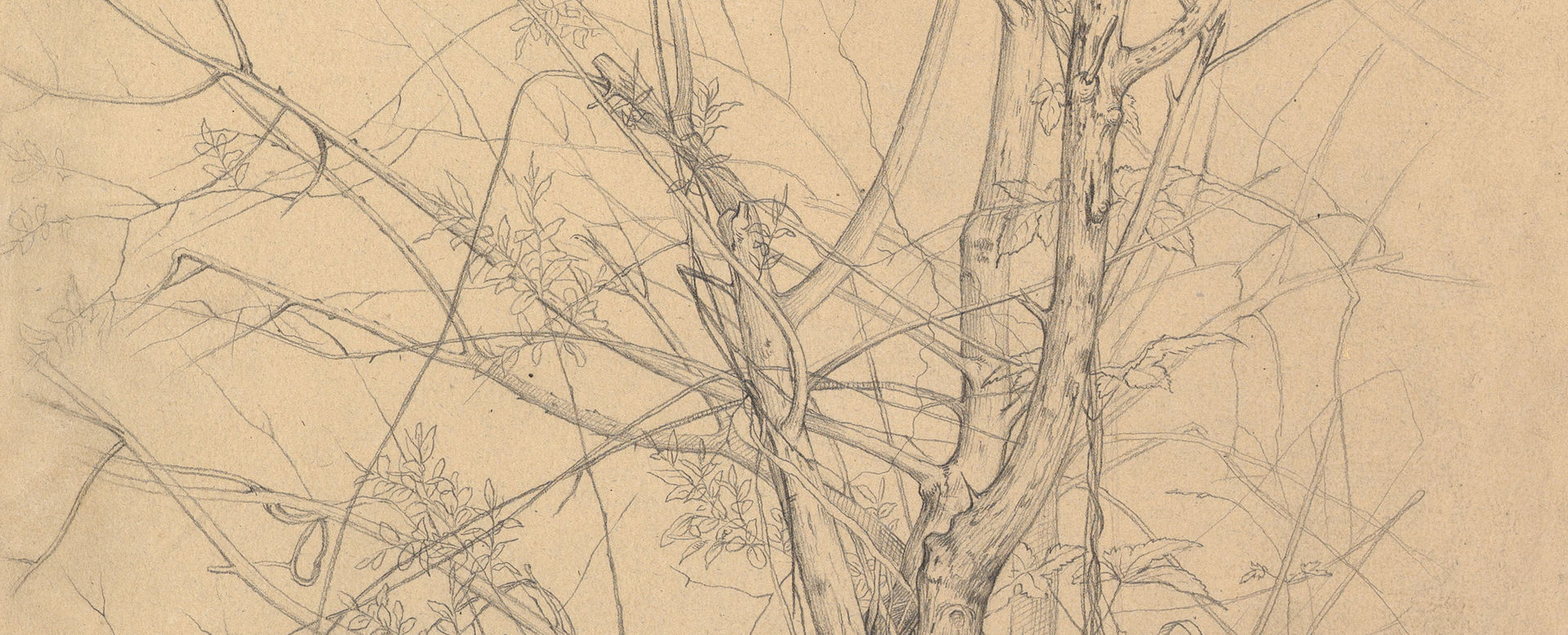Landscape with Apollo and the Muses
Claude Lorrain (Claude Gellée) French
Not on view
This work belongs to a group of five drawings dated 1674 that bear witness to Claude’s ongoing interest in the theme of Apollo and the Muses on Mount Parnassus. This subject was very popular in 17th-century Rome: it was featured in one of the celebrated murals that Raphael had painted in the Vatican, and it served to glorify the patron concerned as a protector of the arts. One of Claude’s most ambitious paintings had been Landscape with Parnassus (National Gallery of Scotland, Edinburgh), commissioned in 1652 by cardinal Camillo Astalli-Pamphilj, the nephew of the then-reigning pope, Innocent X.
Twenty-two years later the artist made a series of works exploring the subject anew, including the Metropolitan Museum’s drawing. This is the largest of the set; it also stands out for the use of tinted paper and the presence of a massive slanted tree. Unlike the other drawings of the series, the emphasis here is not on a play between a mountain in the foreground on one side and a distant plain on the other, but between the figures huddled on the left and the tree leaning towards the right, which are all set in the same plane, a different way of attaining equilibrium through the counterbalancing of opposites. The result is a frieze-like arrangement, where the eye is offered an outlet into depth only along the right margin. This is where a group of poets heading for Mount Parnassus can barely be made out.
The winged horse on the slope of the mountain just above Apollo and the Muses is Pegasus, who has struck the ground and is making the Hippocrene fountain spring, a source of poetic inspiration. Its water reappears at the feet of Apollo and cascades towards the foreground pool, where two swans, birds sacred to Apollo, are floating. A few of the Muses can be identified by virtue of their attributes: the one elegantly striding on the extreme left is Terpsichore, the Muse of dance; the one seated in front of her and holding a trumpet is Clio, the Muse of historical writing (the trumpet refers to the glory that history bestows on its protagonists); the one seated on the right with a book is Calliope, the Muse of epic poetry; the one standing next to her with a theatrical mask is Talia, the Muse of comedy.
Due to rights restrictions, this image cannot be enlarged, viewed at full screen, or downloaded.
This artwork is meant to be viewed from right to left. Scroll left to view more.






